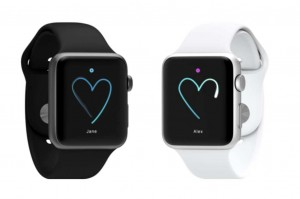Tinder Watch App uses Heart Rate to Approve Matches
- Thursday, July 30 2015 @ 07:41 am
- Contributed by: kellyseal
- Views: 1,423

It’s a revolutionary time in online dating. Now your physiology will be making decisions about who you should date, instead of having to rely on your own decision-making process to swipe left and right.
The new Tinder app debuting on Apple Watch called Hands-Free Tinder, created by developers from Austin-based integrated marketing and advertising firm T3, links a person’s heart rate to their interest in potential matches. Since pulse rates quicken when you are attracted to someone, the technology tracks this and suggests that you are a match. If there’s no quickening of heart rate? Then it’s an automatic rejection.
The process is entirely automated, meaning you don’t have to do the swiping yourself. The watch app does it for you. (Which kind of takes the fun out of Tinder, doesn’t it?) By simply looking at someone’s picture, the app will determine whether to reject or accept a match, all based on the user’s heart rate.
The Apple Watch won’t be the only wearable technology getting the new Tinder app – it will also become available soon on Google Play, so Android wearables will offer Hands Free Tinder, too.
“Swiping left and right is a thing of the past,” explained the developers to the UK’s Daily Mail. “After we found out that the Apple Watch could detect heart rate, we went to work developing hands-free Tinder. Now you can follow your heart to the right match.”
An article in Tech Times pointed out the precariousness of relying on heart rates to monitor attraction or interest in a potential date. Hands-free Tinder does not discriminate. If you are excited in that moment, whether it’s because you saw an old friend or took the first sip of a delicious drink, then your watch will right-swipe for you. The same thing goes if you are excited in a bad way, like if you witness an accident or suddenly remembered that you didn’t turn the stove off when you left the house. It will swipe right for you in these instances, too, because your heart rate goes up. So it’s important to not allow yourself to be distracted while you’re using the new app.
The smartphone helped propel online dating into the mainstream, making it easier than ever for people to choose or reject matches based mostly on a few photos. It has also encouraged our tendency toward laziness, especially when it comes to dating. Instead of manually accepting or rejecting matches, the next evolution of online dating says it will be done for us. Where’s the fun in that?
For more information on this dating app you can go ahead and read our review of Tinder.
